Explain type of learning
Machine learning is a subset of artificial intelligence that involves the development of algorithms and models that allow computers to learn from data and make predictions or decisions without being explicitly programmed. It relies on statistical techniques and mathematical models to analyze and interpret patterns in data.
Types of Machine Learning
In machine learning (ML), there are several types of learning, each with its own approach to training models and solving problems. Here are some of the main types of learning in ML along with examples:
Supervised Learning:
In supervised learning, the model is trained on a labeled dataset, where each example is paired with the correct output. The goal is for the model to learn a mapping from inputs to outputs.
Examples:
Classification: Predicting whether an email is spam or not based on its content.
Regression: Predicting house prices based on features such as size, location, and number of rooms.
Unsupervised Learning:
In unsupervised learning, the model is trained on an unlabeled dataset, and it tries to learn the underlying structure or distribution of the data.
Examples:
Clustering: Grouping similar documents together based on their content.
Dimensionality Reduction: Reducing the number of features in a dataset while preserving its essential information.
Semi-Supervised Learning:
Semi-supervised learning is a combination of supervised and unsupervised learning. It leverages both labeled and unlabeled data to improve model performance.
Examples:
Using a small labeled dataset along with a large unlabeled dataset to train a classifier.
Reinforcement Learning:
Reinforcement learning involves training an agent to interact with an environment in order to maximize some notion of cumulative reward.
Examples:
Training a robot to navigate a maze by rewarding it for reaching the goal and penalizing it for collisions.
Self-Supervised Learning:
Self-supervised learning is a type of unsupervised learning where the model generates its own labels from the input data, typically by solving a pretext task.
Examples:
Predicting the next word in a sentence based on context (language modeling).
Generating a rotated or distorted image and predicting the transformation applied.
Transfer Learning:
Transfer learning involves transferring knowledge from one task or domain to another. A model pre-trained on a large dataset can be fine-tuned on a smaller dataset for a specific task.
Examples:
Using a pre-trained convolutional neural network (CNN) for image classification and fine-tuning it on a specific dataset for a related task.
Here are a few key concepts in machine learning with examples:
Supervised Learning
Example: Predicting House Prices
In supervised learning, the model learns from labeled data where the input features and their corresponding output labels are known. The goal is to learn a mapping between the input features and the output labels to make predictions on new, unseen data.
Examples of supervised learning include:
Classification: Predicting whether an email is spam or not.
Regression: Predicting the price of a house based on its features.
Unsupervised Learning:
Example: Customer Segmentation
In unsupervised learning, the model learns from unlabeled data where only the input features are available. The goal is to discover patterns, relationships, or structures in the data without explicit guidance on the output labels.
Clustering: Grouping similar customers based on their purchasing behavior.
Dimensionality Reduction: Representing high-dimensional data in a lower-dimensional space for visualization or efficient processing.
Semi-Supervised Learning:
Semi-supervised learning is a combination of supervised and unsupervised learning. It uses a small amount of labeled data and a large amount of unlabeled data to train the model. The goal is to leverage the unlabeled data to improve the model's performance. Examples of semi-supervised learning include:
Reinforcement Learning:
Reinforcement learning is a type of machine learning where an agent learns to interact with an environment to maximize a reward signal. The agent learns through a trial-and-error process by taking actions and receiving feedback in the form of rewards or penalties. Examples of reinforcement learning include:
Game Playing: Teaching an AI agent to play chess or video games.
Robotics: Training a robot to perform specific tasks through trial and error.
Text Classification: Training a sentiment analysis model with a small labeled dataset and a large amount of unlabeled text data.
Anomaly Detection: Identifying unusual patterns in a dataset where only a few instances are labeled as anomalies.
Regression:
Example: Predicting Stock Prices
Regression is a type of supervised learning where the goal is to predict a continuous output variable based on input features. It involves fitting a mathematical function to the data that best represents the relationship between the input features and the output variable.
Classification:
Example: Email Spam Detection
Classification is a type of supervised learning where the goal is to assign input data to predefined categories or classes. The model learns a decision boundary to classify new, unseen data into one of the predefined classes.
Clustering:
Example: Image Segmentation
Clustering is an unsupervised learning technique where the goal is to group similar data points together based on their inherent patterns or similarities. It helps in identifying hidden structures or clusters in the data.
Feature Extraction:
Example: Text Document Classification
Feature extraction involves transforming raw data into a meaningful representation that captures the essential information for the learning algorithm. It involves techniques such as dimensionality reduction, text embedding, or image feature extraction.
Model Evaluation:
Example: Accuracy, Precision, Recall
Model evaluation is the process of assessing the performance of a machine learning model. It involves using various evaluation metrics such as accuracy, precision, recall, F1 score, or ROC curve to measure how well the model is performing on unseen data.
Overfitting and Underfitting:
Example: Polynomial Regression
Overfitting occurs when a model becomes too complex and captures noise or irrelevant patterns in the training data, leading to poor performance on new data. Underfitting occurs when a model is too simple and fails to capture the underlying patterns in the data. Balancing the complexity of the model is crucial to avoid overfitting or underfitting.
These concepts provide a foundation for understanding and applying machine learning algorithms to various real-world problems. Each concept has its own algorithms, techniques, and best practices that can be further explored and applied depending on the specific problem and data at hand.
Machine Learning Steps
The machine learning process typically involves several steps to develop and deploy a predictive model. Here are the general steps involved in machine learning, along with examples:
Data Collection:
Example: Collecting customer demographic data for a marketing campaign
Gather relevant data that is representative of the problem you're trying to solve. This may involve collecting data from various sources such as databases, APIs, or manual data entry.
Data Preprocessing:
Example: Handling missing values in a dataset
Clean and preprocess the collected data to handle missing values, outliers, and inconsistencies. This step may involve tasks like data cleaning, data normalization, handling categorical variables, and feature engineering.
Data Splitting:
Example: Splitting a dataset into training and test sets
Divide the data into separate sets for training and evaluation. Typically, the data is split into a training set (used to train the model) and a test set (used to evaluate the model's performance).
Model Selection:
Example: Choosing between a decision tree and a random forest model
Select an appropriate machine learning algorithm or model based on the problem type, data characteristics, and desired outcomes. This step involves understanding different algorithms, their assumptions, strengths, and limitations.
Model Training:
Example: Training a logistic regression model on the training data
Fit the selected model to the training data to learn the underlying patterns and relationships. This involves using an optimization algorithm to adjust the model's parameters and minimize the prediction errors.
Model Evaluation:
Example: Assessing the accuracy of a classification model using cross-validation
Evaluate the trained model's performance on the test data using suitable evaluation metrics such as accuracy, precision, recall, F1 score, or area under the curve (AUC). This step helps assess how well the model generalizes to unseen data.
Model Tuning:
Example: Adjusting hyperparameters of a neural network model
Fine-tune the model's hyperparameters to optimize its performance. This step involves adjusting parameters like learning rate, regularization strength, or tree depth to find the best configuration for the given problem.
Model Deployment:
Example: Deploying a trained model as a web service or API
Once the model is trained and evaluated, deploy it in a production environment for real-world use. This may involve integrating the model into an application, creating an API, or deploying it on a cloud platform.
Model Monitoring and Maintenance:
Example: Periodically retraining the model with new data
Continuously monitor the model's performance in the production environment and update it as necessary. This includes monitoring data quality, retraining the model with new data, and addressing any concept drift or performance degradation over time.
These steps provide a high-level overview of the machine learning process. It's important to iterate and refine these steps based on the specific problem, data characteristics, and feedback from model evaluation to improve the model's performance and effectiveness.
Application
Machine learning has a wide range of applications across various domains. Here are some examples of machine learning applications:
Image Recognition: Machine learning algorithms can be used to develop image recognition systems that can identify objects, people, or patterns in images. Applications include facial recognition, object detection, and image classification.
Natural Language Processing (NLP): Machine learning techniques are used in NLP to process and analyze human language. This includes tasks such as sentiment analysis, language translation, text summarization, and chatbot development.
Recommendation Systems:
Machine learning algorithms are used in recommendation systems to provide personalized recommendations to users. Examples include movie or music recommendations, product recommendations on e-commerce platforms, and content recommendations on social media platforms.
Fraud Detection: Machine learning can be used to detect fraudulent activities in various domains such as banking, insurance, and online transactions. Algorithms can learn patterns from historical data to identify suspicious behaviors and flag potential fraud instances.
Predictive Analytics: Machine learning models can be used for predictive analytics to forecast future trends and outcomes. This includes applications like sales forecasting, demand prediction, stock market analysis, and weather prediction.
Healthcare: Machine learning is used in various healthcare applications, including disease diagnosis, medical imaging analysis, drug discovery, personalized medicine, and patient monitoring.
Autonomous Vehicles: Machine learning plays a crucial role in developing self-driving cars and autonomous vehicles. It involves tasks such as object detection, path planning, and real-time decision making based on sensor data.
Financial Analysis: Machine learning models can be used in financial analysis for tasks like credit scoring, risk assessment, fraud detection, algorithmic trading, and portfolio optimization.
Customer Churn Prediction: Machine learning techniques can help predict customer churn, which is the likelihood of a customer discontinuing the use of a product or service. This enables businesses to take proactive measures to retain customers and improve customer satisfaction.
Speech Recognition: Machine learning algorithms are used in speech recognition systems to convert spoken language into written text. This technology is used in voice assistants, transcription services, and voice-controlled systems.
What is machine learning, and how does it differ from traditional programming?
Explain the difference between supervised and unsupervised learning.
What is the bias-variance tradeoff in machine learning?
Describe the steps involved in a typical machine learning workflow.
What is overfitting in machine learning, and how can it be addressed?
What evaluation metrics are commonly used for classification problems?
Explain the concept of cross-validation and why it is useful.
Describe different feature selection techniques in machine learning.
What are the advantages and disadvantages of using decision trees for modeling?
Explain the difference between bagging and boosting in ensemble learning.
What is the purpose of regularization in machine learning, and how does it work?
Describe how the k-means clustering algorithm works.
What are the differences between L1 and L2 regularization?
Explain the concept of gradient descent and its role in optimizing machine learning models.
What are support vector machines (SVMs) and how do they work?
Describe the working principle of a neural network.
What is backpropagation and how does it relate to training neural networks?
Explain the concept of dimensionality reduction and give examples of techniques used for it.
What is the ROC curve, and how is it used to evaluate binary classification models?
Discuss the challenges and considerations when working with imbalanced datasets.
Here are some machine learning project titles, brief descriptions, tools/technologies used, and potential outcomes:
These machine learning projects cover a wide range of applications and demonstrate the diversity of the field. When working on these projects, ensure that you follow best practices in data preprocessing, model selection, and evaluation. Documentation and clear communication of your approach and results are crucial in showcasing your machine learning skills to potential employers or collaborators.

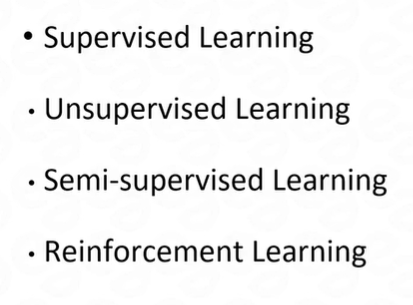
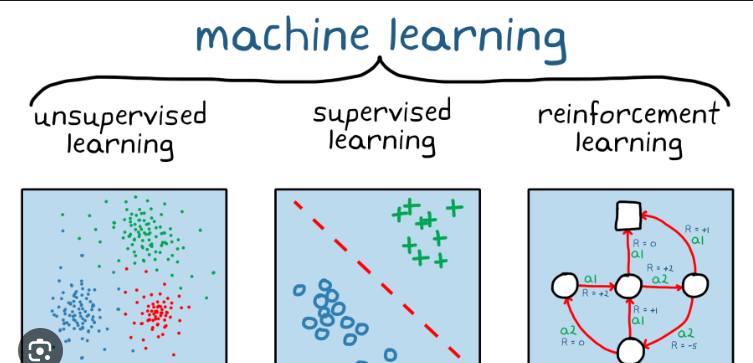
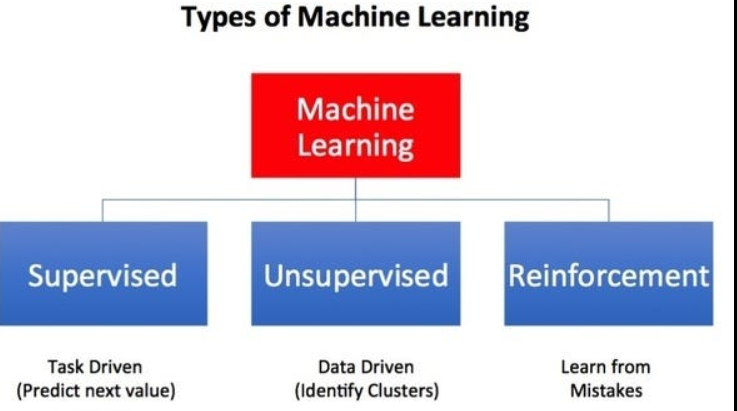

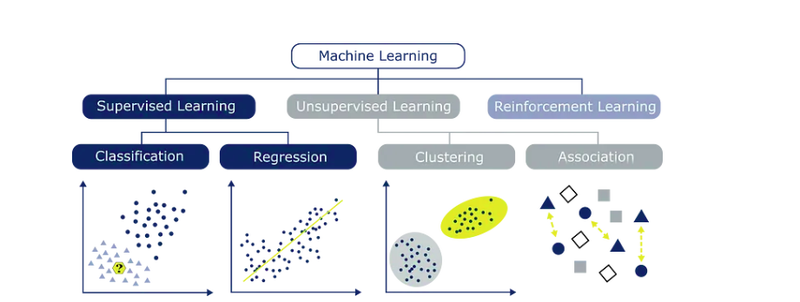
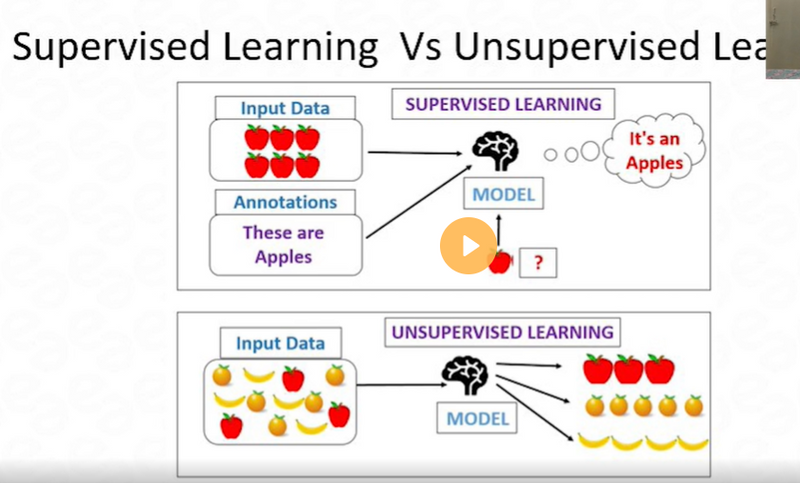
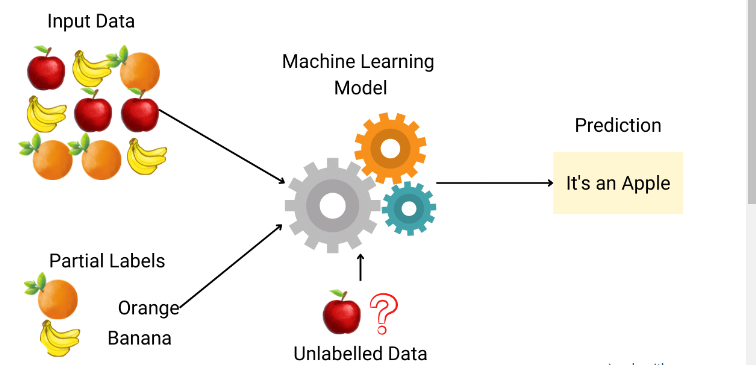
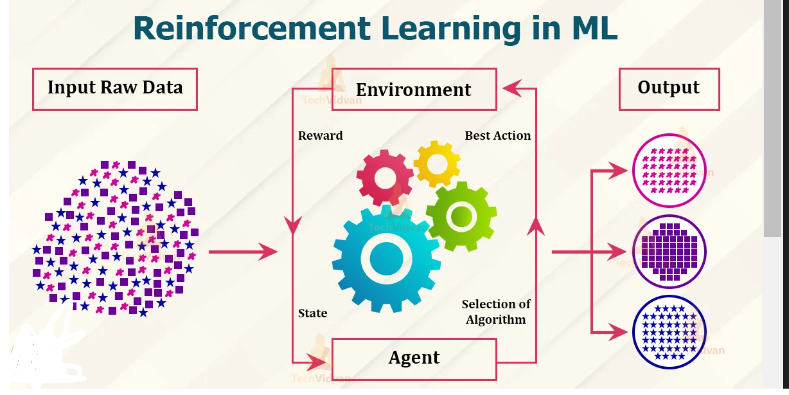
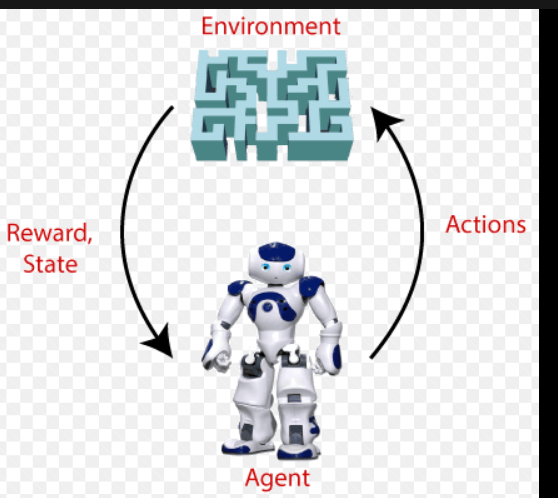
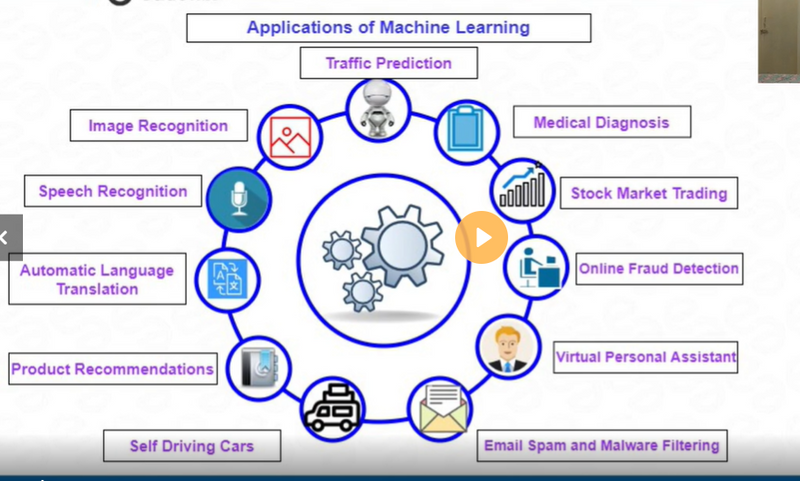
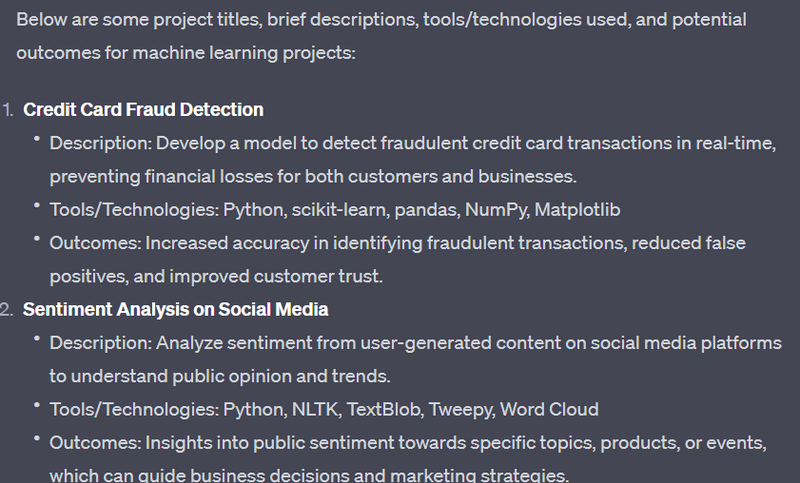
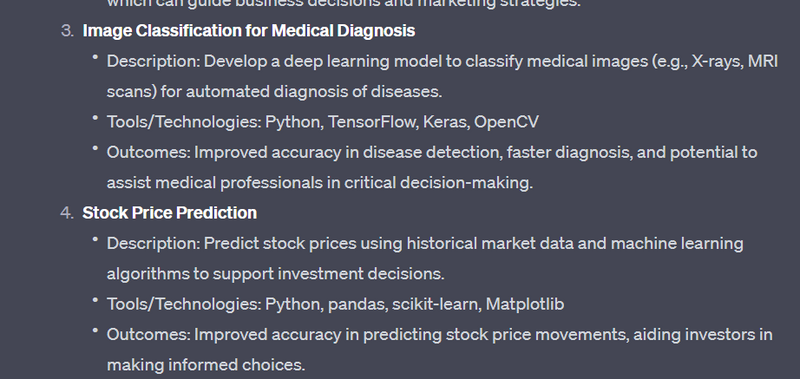
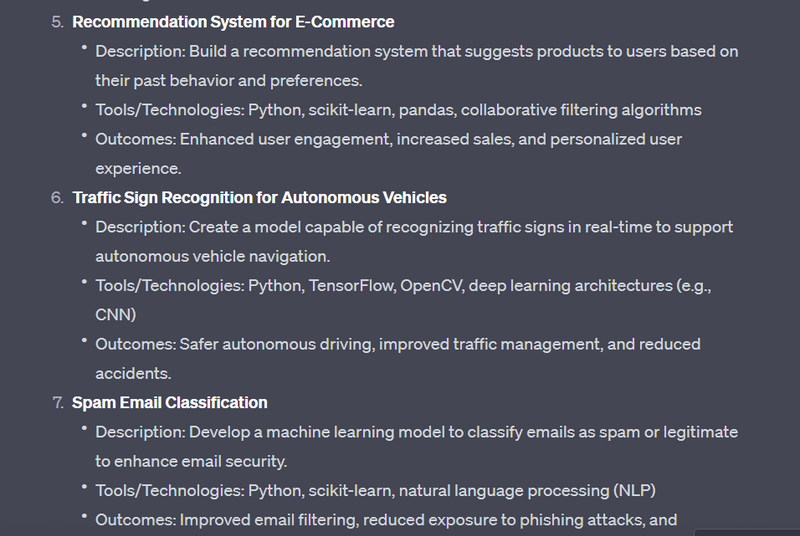
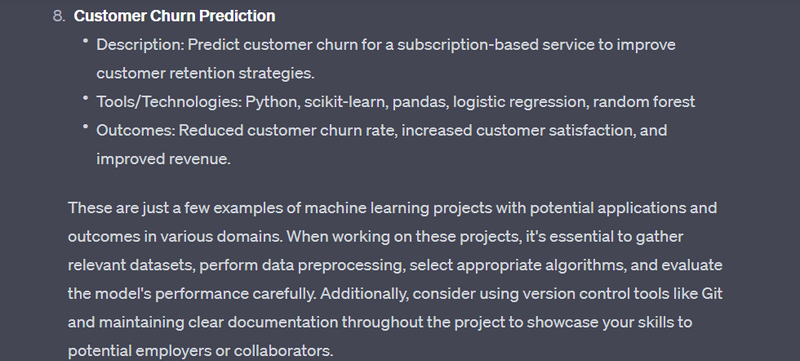
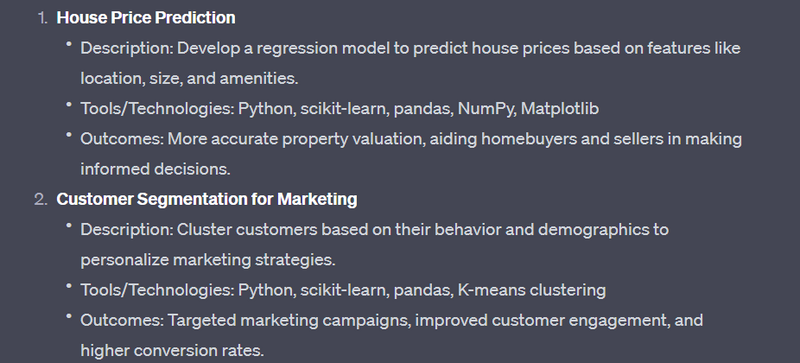
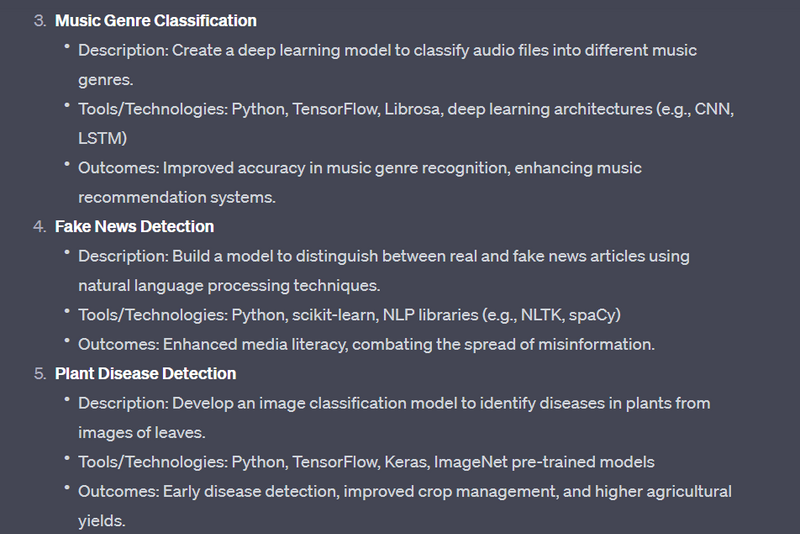
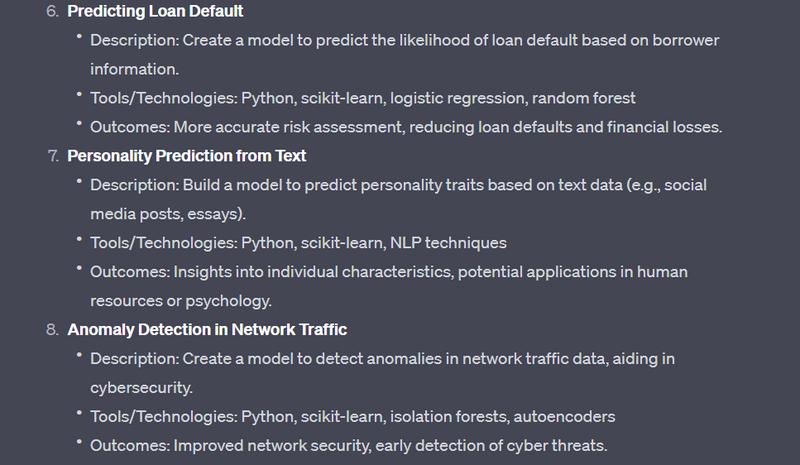
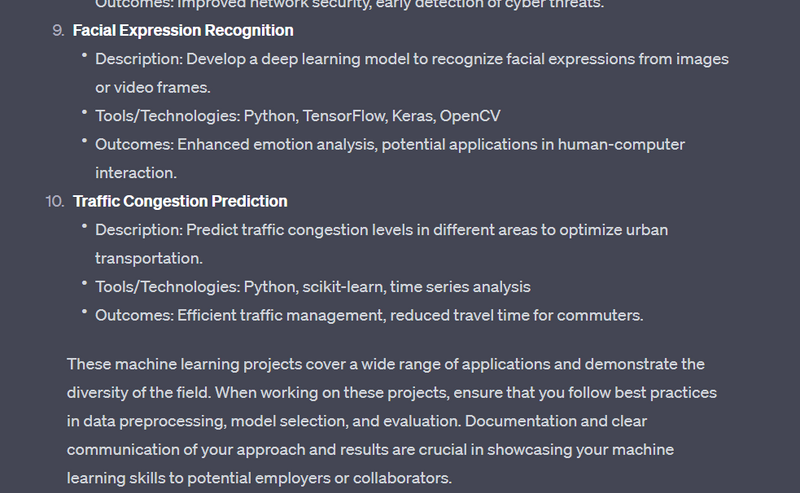

Top comments (0)